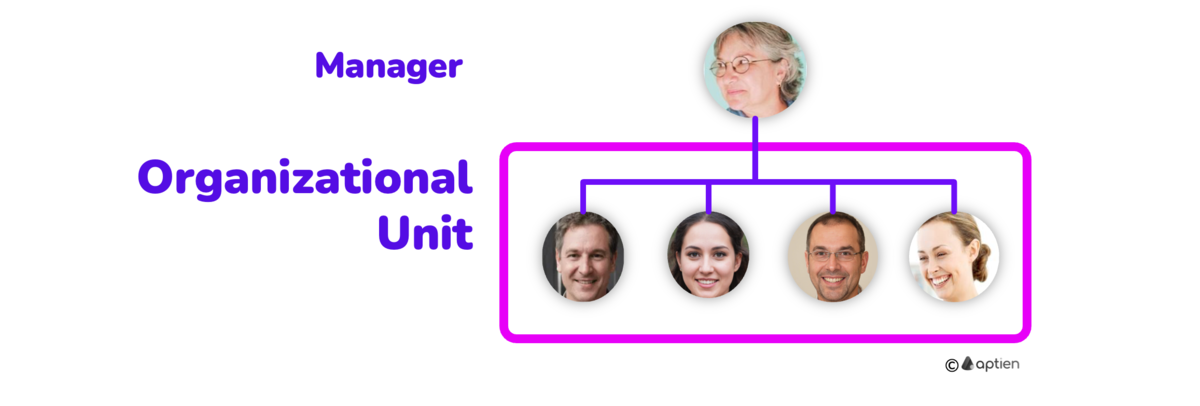An organizational unit (or department) is a part of a company that groups employees into manageable teams (see organizational structure). An Org unit could be a team, department, or any group formed to handle specific tasks or functions that support the company’s goals.
- It’s an important part of the company’s setup, enabling specialization, coordination, and effective management of resources and responsibilities.
- Organizational units are usually created based on factors like processes, functions, services, products, or location.
What you need for org unit (or department)?
- Manager: Each Unit has a manager or team lead who oversees day-to-day operations, makes decisions, and ensures the unit’s work aligns with company goals.
- Scope of Work: Each Unit has a clear focus that defines the specific tasks, services, or functions it handles, contributing to the company’s overall strategy.
- Team Members: Each Unit includes employees with the skills needed to complete the work within its scope. The size and makeup of the team depend on the tasks and their complexity.
- Resources: Each Unit needs access to necessary resources like budgets, tools, technology, and facilities to perform effectively.
Organizational Units and Organizational Structure
- Organizational units are organized into an organizational structure
What are Most Common Organizational Units in SMBs?
- In small and medium-sized businesses (SMBs) organizational units are typically tailored to the size, industry, and operational focus of the company.
- Below are examples of common organizational units in SMBs
Core Business Organizational Units
- Sales: Focuses on acquiring customers, managing client relationships, and generating revenue.
- Marketing: Manages branding, advertising, social media, and market research to support customer acquisition and retention.
- Customer Support or Service: Provides assistance to customers, resolves issues, and ensures after-sales satisfaction.
Supporting Organizational Units
- Human Resources (HR): Handles recruitment, payroll, employee relations, and compliance.
- Finance and Accounting: Manages budgeting, bookkeeping, tax compliance, and financial planning.
- Operations: Oversees production, logistics, supply chain, or service delivery.
- IT Support: Handles technical infrastructure, software, and data security.
What are The Main Reasons of Dividing the Company into Organizational Units?
- Functional Units: HR, Finance, Marketing, IT.
- Geographic Units: Regional offices (e.g., North America division, European division).
- Project Teams: Temporary groups focused on specific projects or initiatives.
- Product-Based Units: Divisions organized around product lines or services.
Summary of Key Takeaways on Organizational Units
- Arise from the Division of Labor: Organizational units are created to facilitate the division of labor.
- Management: Each unit has its own manager who supervises and manages the work of its members.
- Resource Allocation: Resources such as personnel, budget, and tools are assigned to the unit to fulfill its functions.
- Defined Purpose and Responsibilities: Each unit has a clear role or responsibility contributing to the overall objectives of the organization.
- Hierarchy Exists Among Them: Units often have designated leadership, reporting relationships, and internal processes.
- Interconnectedness: Units work independently but are part of the larger organizational framework, collaborating with other units to achieve shared goals.
